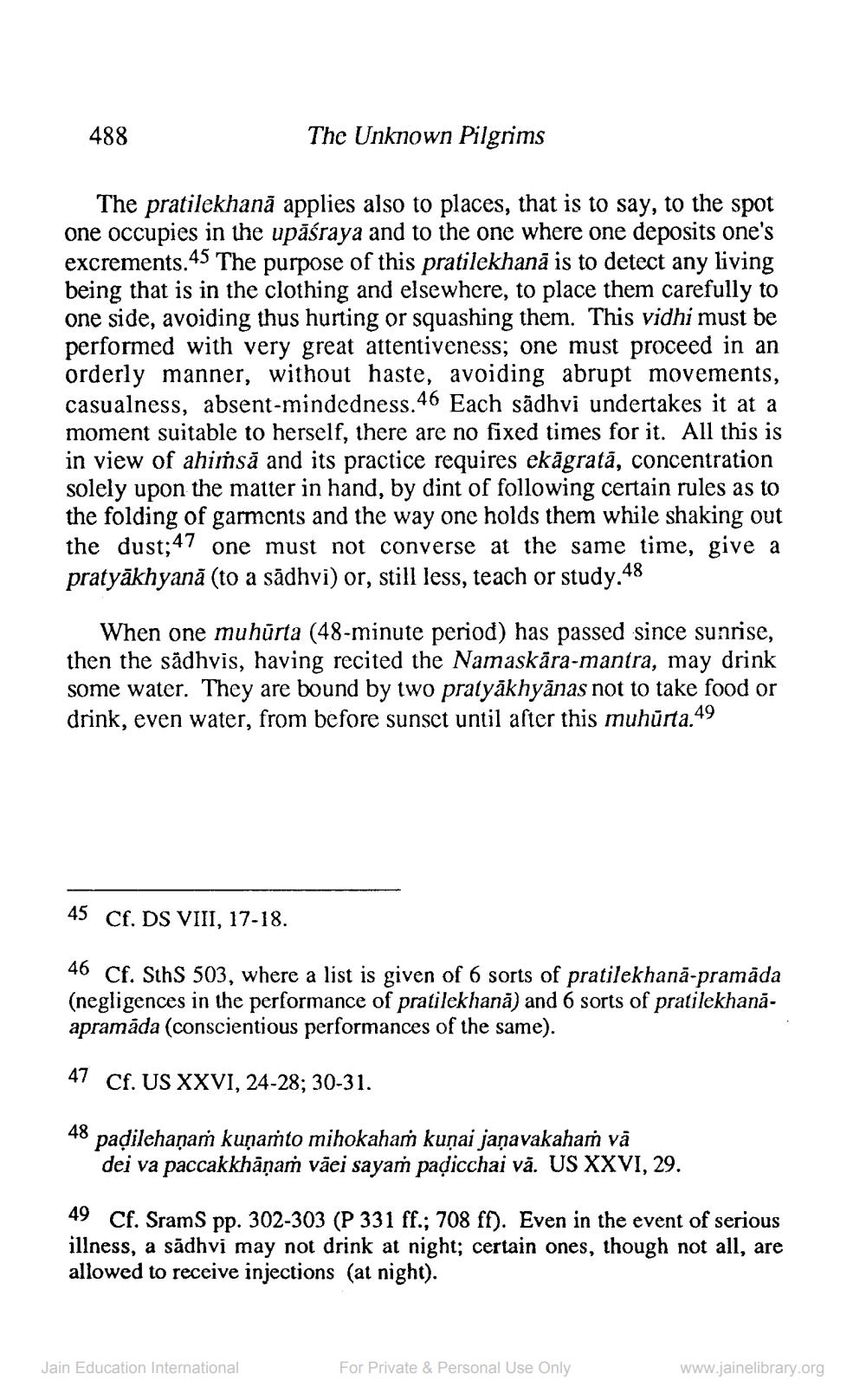________________
488
The Unknown Pilgrims
The pratilekhană applies also to places, that is to say, to the spot one occupies in the upăśraya and to the one where one deposits one's excrements.45 The purpose of this pratilekhanā is to detect any living being that is in the clothing and elsewhere, to place them carefully to one side, avoiding thus hurting or squashing them. This vidhi must be performed with very great attentiveness; one must proceed in an orderly manner, without haste, avoiding abrupt movements, casualness, absent-mindedness.46 Each sādhvi undertakes it at a moment suitable to herself, there are no fixed times for it. All this is in view of ahińsă and its practice requires ekāgratā, concentration solely upon the matter in hand, by dint of following certain rules as to the folding of garments and the way one holds them while shaking out the dust;47 one must not converse at the same time, give a pratyākhyanā (to a sādhvi) or, still less, teach or study. 48
When one muhurta (48-minute period) has passed since sunrise, then the sadhyis, having recited the Namaskāra-mantra, may drink some water. They are bound by two pratyākhyānas not to take food or drink, even water, from before sunset until after this muhūrta.49
45 Cf. DS VIII, 17-18.
46 Cf. SthS 503, where a list is given of 6 sorts of pratilekhanā-pramāda (negligences in the performance of pratilekhanā) and 6 sorts of pratilekhanaapramāda (conscientious performances of the same).
47 Cf. US XXVI, 24-28; 30-31.
48 paờilehaņaṁ kuņaṁto mihokaham kuņai janavakahaṁ vä
dei va paccakkhāņaí vãei sayam padicchai vā. US XXVI, 29.
49 Cf. Sram pp. 302-303 (P 331 ff.; 708 ff). Even in the event of serious illness, a sādhvi may not drink at night; certain ones, though not all, are allowed to receive injections (at night).
Jain Education International
For Private & Personal Use Only
www.jainelibrary.org




